St Mary's College Grade 8 HASS B

Hello hello St Mary's Grade 8 HASS class!
Thank you for your questions about climate change. You asked some really interesting questions about actions, the future of our earth, animals, politics and glaciers.
You'll find answers to your questions from our climate experts below - have a read and watch their answers.
You can also have a look at what other classes across Tasmania asked this year, as well as our climate change toolkit.
Our Questions
So, there are a few pieces to this:
- First an important premise: Only ice that currently sits on land would contribute to increasing sea levels. Sea ice, which forms by freezing of sea water at high latitudes, does not change sea level. So to answer your question we must look at land ice alone.
- What counts as land ice, and how much sea level does it correspond to? Land ice is found in (i) the grounded parts of the two major ice sheets on Earth, Greenland and Antarctica, (ii) a few smaller ice caps (like Svalbard), and (iii) mountain glaciers. If the Greenland Ice Sheet melted, scientists estimate that sea level would rise about 6 meters. If the Antarctic Ice Sheet melted, sea level would rise by about 60 meters. If all the mountain glaciers on Earth melted, sea level would rise by about 40 cm. In total, this adds up to approx 66.4 m.
- How much land would be left if all this land ice melted? Well, all the land that is approx. 65 m above sea level nowadays. You can go check on Google Earth or similar what that means for the place where you live. Can you find out what would be above this level? When you do this, just bear in mind that even if all this ice were to melt (which we do not know it will), certainly it would not happen in our lifetime, and most likely for several centuries. What’s important to realize though is that the impact this could have is huge for all people living on Earth, so we should do all we possibly can to avoid making climate warmer and our land ice melt.
It depends on what the local climate does to the glacier.
In order to understand what it takes for a glacier to disappear, let’s first think about what does it take to keep the size of a glacier constant over time. This depends on climate, in two ways: the snow that accumulates on the glacier in winter with snowfall slowly turns into ice, thus growing the glacier (this is known as accumulation, which stands for `mass gain'); warm summer temperatures melt the ice like an ice cube out of the refrigerator, thus shrinking the glacier (this is known as `ablation’, which stands for `mass loss').
If over one year winter mass gain balances summer mass loss, then the glacier remains of the same size. If winter gain exceeds summer loss, then the glacier grows. If summer loss exceeds winter gain, then the glacier …?
How much exactly the glacier grows or shrinks over one year depends on the difference between winter gain and summer loss. This difference is usually small, and therefore amounts to mass changes from year to year of the order of a small fraction of the glacier total mass.
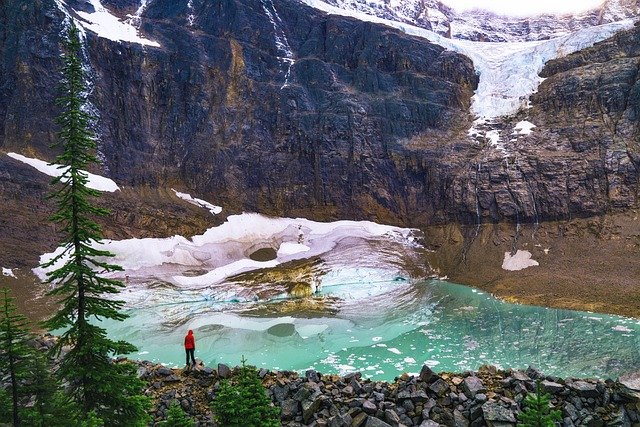
Ok, so back to your question: how long does it take for one glacier to melt completely? Ultimately, this comes down to how big is the yearly change in glacier mass induced by climate change compared to the size of the specific glacier. So there is no unique answer that applies to all glaciers of the same mountain range: if climate keeps promoting melting, then not all glaciers of the same mountain range would disappear at the same time. Everything else being the same, bigger glaciers would take longer to disappear (but take this just as a rule of thumb: also glaciers with more shaded aspects, or glaciers sitting at higher elevations would survive longer, so it’s not just as simple as size).
Anyways, details aside, and just to give you a sense for what the time scales are: If we think about mountain glaciers (like those in New Zealand or the Himalayas, or the European Alps), the time it takes for a glacier to disappear is anywhere between 10-20 years and 2-3 centuries.
Plants and animals are threatened by lots of things like habitat loss from land clearing, or being hunted, fished or harvested. On top of these pressures are climate change impacts.
Because there are so many interacting threats to biodiversity, we haven’t yet attributed many species’ extinctions only to climate change. Species that we have lost to date from climate change are species that occur only in one place, so they are very rare, and those places are exposed to immediate climate impacts such as flooding and sea level rise.
The Bramble Cay Melomys was an Australian rodent that occurred only on one island in the Torres Strait. In 2016, it became the first recorded species extinction attributed to human induced climate change. The small sand island it lived on was affected by sea level rise and storm events. The extinction record by the State of Queensland said that extinction was caused by "ocean inundation of the low-lying cay, very likely on multiple occasions, during the last decade, causing dramatic habitat loss and perhaps also direct mortality of individuals" (1). There are likely other species that have been lost to a similar fate.
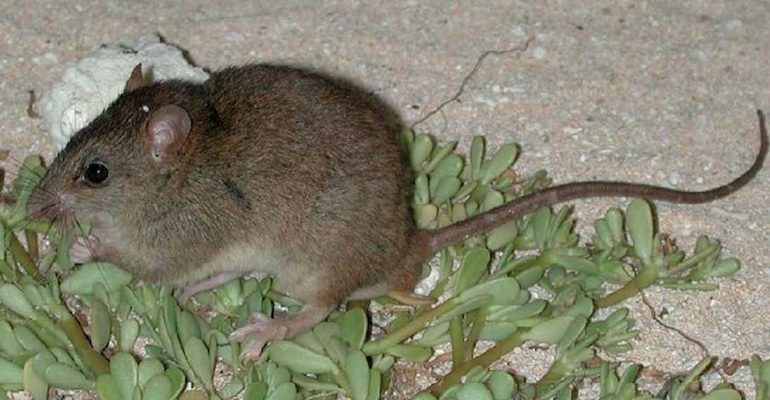
The IUCN Red List of species is the best source for understanding global threats to species. Expert have listed climate change as a cause of decline for 19% of all species listed as near threatened or threatened. Climate change impacts that threaten species include increases in storms, flooding, extreme temperatures, drought, and sea level rise.
As an example – Hooded seals are a species threatened directly by climate change. Their population has dropped in abundance by 90% in the northeastern Atlantic Arctic over the last 20 years. This decline is attributed to loss of sea ice which has reduced the number of places available for resting and raising pups.
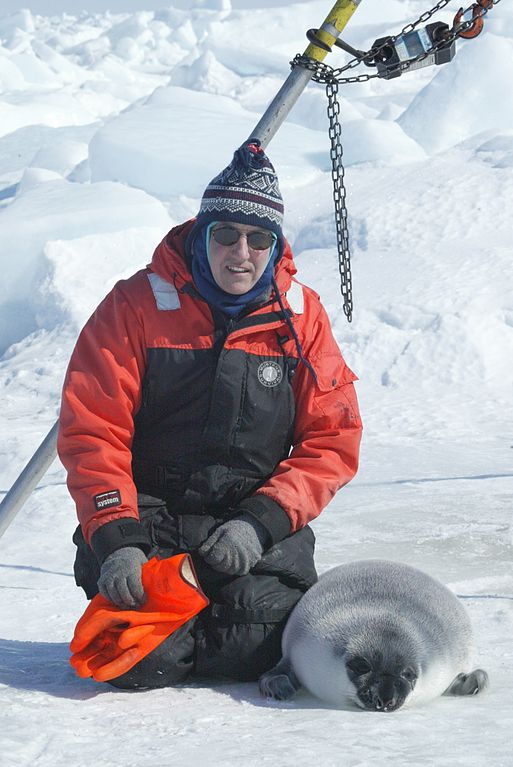
Looking into the future – One study estimated that if we follow our current, business-as-usual trajectory of climate change, which is projected to lead to a 4.3°C temperature rise, climate change would threaten one in six species (16%). This could as much as double our extinction rates.
This is one of many reasons why people are calling for governments to limit climate change to 1.5°C, by ‘decarbonising’ our economy – or stopping emissions of CO2. If we do this, we can reduce the rates at which plants and animals become extinct.
Climate change can affect populations of animals in lots of ways.
Breeding – it can affect the way they breed every year. For example, Emperor penguins breed on the sea ice, in areas that are stable and don’t change from year to year. They lay their eggs on the ice and hatch the chicks and look after them until they are old enough to swim. But the areas of ice they breed on are being affected by climate change. Some areas of ice have shrunk, or broken up, destroying colonies that have bred in those areas for thousands of years. Some colonies are losing their special breeding areas and the number of chicks making it to adulthood is shrinking every year. Some breeding colonies no longer exist, because the sea ice they once used to raise their chicks is now gone. Over time this will slowly reduce the total number of Emperor penguins as there will be less new chicks coming into the population every year. Some colonies are ok and are not affected yet, but may be at risk in future.
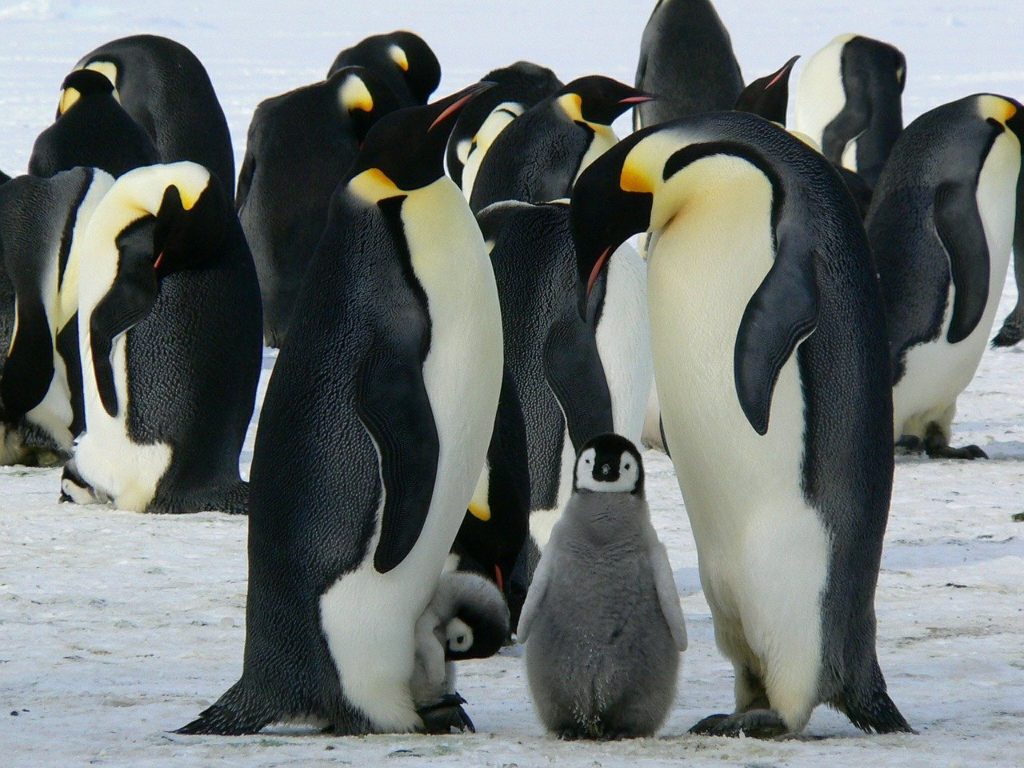
Competition – Some populations of animals may be affected by competition for space or food as climate change affects their habitats. Populations of animals that live on the sea floor in the dark areas under sea ice, where there is not enough light for seaweed to grow, may have to compete with seaweed for space as the amount of sea ice changes. With less sea ice there is more light that reaches the sea floor, which is good for seaweed but bad for the animals that live in these areas. Seaweed can grow very quickly once it is established, crowding out animals such as sponges and corals – outcompeting them for space. This could result in a loss of biodiversity in these areas as lots of animals populations are replaced by seaweed.
Ocean acidification – This is the process that occurs as more carbon dioxide is absorbed by seawater. It makes it slightly more acidic each year which can affect animals in lots of ways. One way is by affecting those animals which make shells out of calcium carbonate. Ocean acidification makes it harder for them to make their shell, and eventually it could mean their shells start to dissolve. This is already happening to a planktonic animal called a sea-butterfly, or pteropods. These beautiful little animals have very thin fragile shells. Climate change through ocean acidification is causing their shells to be smaller and weaker. This might mean they have to put more time and energy into making their shells, which could mean less energy for reproduction. It could eventually cause them to die before they can reproduce, meaning that their populations will shrink. This could have serious effects on the food web in Antarctic seas, as pteropods are important food for lots of other animals like fish, penguins and even whales.
This is an excellent question, and one of the questions most students want an answer to. You can be someone who takes climate action!
Each of us can act individually (on our own) and collectively (together with others) to act on climate. We know, from scientific evidence, that climate change cannot be stopped and is happening already – but it can be reduced and slowed down. People today and into the future (including you) can make changes and decisions that will greatly reduce climate change and its impacts.
Some of these decisions are happening on a systemic scale - they the really big changes we need to reduce emissions from industries and electricity generation.
For example, world leaders are meeting together at COP26 (which is the UN Climate Change Conference of the Parties) to discuss pathways to do this – in particular, to ensure that global temperature rises do not exceed 1.5 degrees, and how we can adapt to climate change impacts into the future. If we can manage to greatly reduce global greenhouse gas emissions (such as carbon dioxide) we can limit climate change.
You might wonder how young people can influence big changes like this? By using your voices! Young people are involved in many groups and movements such as the School Strikes for Climate that have already made a difference to the way world leaders think about climate action.
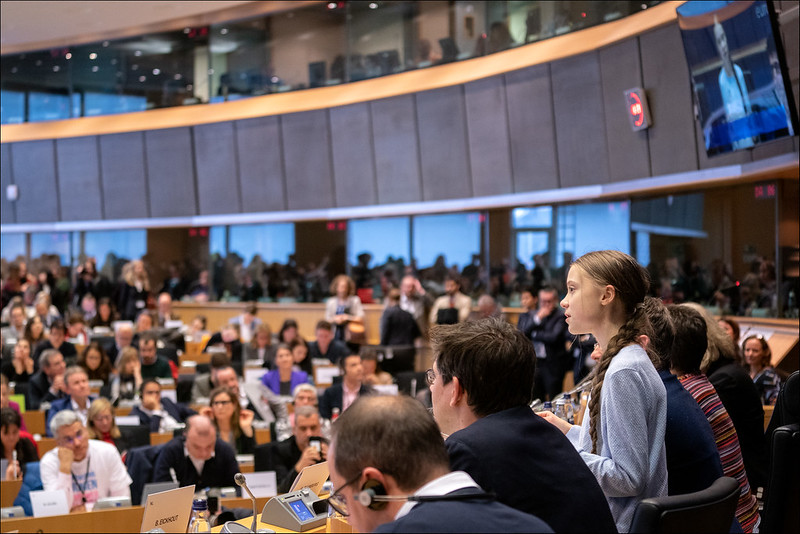
At a smaller scale, all of us can do something to make positive changes and have an impact on tackling climate change. Some people can do more and less than others, and that is OK - it’s great actually because lots of small changes can lead to big impact. In everyday life, there’s lot that you might be able to do, for example:
- You can aim to take the bus or walk, or ride your bike to school more.
- You could eat more vegetables, and eat meat less often (maybe even encourage your family and friends to have ‘meat free Mondays’?!). Plant-based foods generally produce fewer greenhouse gas emissions and they also require less energy, land, and water usage.
- You can speak up! Tell your friends and family about climate change and the small changes each of us can do to make a difference - remembering that we all have different abilities to make these changes, big and small.
There are a lot more ideas you can check out on our 'What can I do?' page.
This is an excellent question! And a complicated one to answer because it involves lots of different parts, but let me try! Lots of you might have heard that globally, we are trying to limit global warming to 1.5°C in the next decades. Whilst this might sound like a small number, it actually reflects an average of temperature increases and decreases all around the world. The reason that 1.5°C has been identified is that if we go past this temperature rise the world is likely to experience extreme events such as heatwaves, forest fires and flooding more frequently – but the world won’t be uninhabitable.
The world will not become uninhabitable because we will be able to adapt – already, lots of people are adapting to climate change around the world. For example, in Australia we are managing forests differently to prevent big burn events from happening. Scientists and Indigenous people are working together to reduce forest fires and protect natural environments, wildlife, and people. Australia is also protecting important ecosystems such as the Great Barrier Reef – the National Reef Restoration and Adaptation Program is working to help the reef adapt and recover from the impacts of climate change.
We are long way away from an uninhabitable temperature! It could take many thousands of years for temperatures to be too severe for people to live. But we want to protect people today and future generations from extreme weather events and other impacts of climate change. To do so, people around the world will need to act fast to make changes. If we can manage to greatly reduce global greenhouse gas emissions (such as carbon dioxide, CO2, by driving less or by burning less fossil fuels like coal) we can limit climate change.
This is a great question! The recent IPCC report (from the Intergovernmental Panel on Climate Change – which includes experts from Tasmania!) tells us that collectively, we will need to act fast to make changes to limit global warming to 1.5°C in the next decades. If we can manage to greatly reduce global greenhouse gas emissions (such as carbon dioxide, or CO2, by driving less or by burning less fossil fuels like coal) we can limit climate change. Most likely, it could take 20-30 years to see global temperatures become stable.
To help have quick and large impact, we need to take action at individual, collective and systematic levels:
At an individual level, each of us can do things like:
- Aim to take the bus, or walk or ride your bike to school more instead of travelling by car.
- Eat more vegetables and less meat (maybe even encourage your family and friends to have ‘meat free Mondays’?!) Plant-based foods generally produce fewer greenhouse gas emissions and they also require less energy, land, and water usage. Or try to eat more local food that hasn’t need to come from far away, which is a fun way to try new food and get to know Tasmanian food producers at your local farmer’s market!
- Speak up! Tell your friends and family about climate change and the small changes each of us can do to make a difference - remembering that we all have different abilities to make these changes, big and small.
But remember that this will require more than just individual action. And whilst reducing emissions is a good thing, if we completely stopped emitting CO2 tomorrow, there wouldn’t be enough energy to generate electricity, or for us be able to travel and bring people and food to places around the world. That means we need to change our systems (like the ways we transport things, and make electricity) so that we can live without needing to use fossil fuels.
As you’ve outlined in your question, we need to work together to achieve these kinds of system changes to take action on climate. Using our voices to demand change is also a really important thing we can do. Find out more things we can all do on the 'What can I do?' page.
Everyone takes a different path, but the best way is to keep asking questions; at school, at home everywhere! Questions are really the core of science, and as the saying goes, there really aren’t bad one. Asking questions opens doors, makes you meet new people, and leads you down paths you never expected to go down. They don’t even have to be questions about science, per se. It can just be asking how you can get involved.
For me, I started as an engineer in Uni and didn’t really know what I want to do after I graduated. Then one day I asked a professor if there was any research he was doing that I could help with. Lo and behold, he said yes, and now here I am 12 years later, a real life oceanographer and climate scientist. So just remember, it never hurts to ask!
It’s very important that we do whatever we can to help slow climate change, even if some of the climate effects are unavoidable.
But to answer this, let’s focus on a few key variables. By 2040, no matter what we do – aggressively reduce emissions or not – the amount of warming will be about 1.5 to 1.6°C. With this warming will come some changes in rain. It is predicted that southwest and eastern Australia will be drier, Tasmania probably about the same. Heat waves will happen about twice as often, and when they do occur, they will be hotter. Sea level will likely be about 10cm higher than it is now, but this is difficult to predict.
This is not very good news, but the important thing to realise is that anything we do now, will start to make climate change less worse after 2040.
Yes. In fact, since records began about 100 years ago, the average Australian temperature has warmed but about 1.4°C. By 2050, Tasmania is projected to experience an increase in temperature of at least 1.5°C. We say at least because the real amount depends on what happens to CO2 emissions between now and then. By 2100, Tasmania is projected to experience an increase of 1.5°C to 3°C in temperature across all locations, and more than 4°C in mountain regions.
But this is the average across the year. There will also be changes in temperature extremes, like heat waves. For example, for 1961-1990, Launceston had an average of 29 days per year over 25°C. For 2070-2099, we predict that Launceston will average 75 days per year over 25°C.
We asked a wetland ecologist, a fire scientist, and a Tasmanian Aboriginal person to answer this question. Their answers may surprise you - because climate change is already affecting Tasmania.
Indigenous perspective
Tasmanian Aboriginal People have been seeing climate change effects for well over 15 years now, we have noticed these effects on our traditional cultural resources such as the marineer shells, Mutton Birds, and dog wood trees/saplings.
Marineer Shells are used in traditional shell necklace making (mental health, connection to country). The shells come in a variety of colours and sizes. They are an iridescent metallic green or blue colour and are often representative of status or valued highly as a trade item, depending on the quality, quantity, and shell variety.
Some of the climate change affects which has been seen on the shells are discoloration, spotted corrosion, thinning of the shell walls, and becoming more brittle because of this. Their numbers are reducing, the water they live in has become more acidic, the weeds they live in and on have reduced in number and coverage per hectare, in some cases being pushed out of the area by other weeds.

Mutton birds are being affected by micro plastics in the water, and the blockages are interfering with their energy levels for their long-haul migrations and breeding cycles. Dog wood (used for making spears and clap sticks) saplings are growing at a faster rate and are being shown to not grow as straight nor with the same internal strength qualities that have been apparent for thousands of years.
Because glaciers hold large amounts of water in the form of ice the most immediate concern for island locations like Tassie is sea level rise. Rising sea levels could result in erosion, flooding, storm damage and the loss of beaches and infrastructure - impacting animal and human communities along Tassie’s coasts. This ice loss also impacts the climate because ice helps to cool the entire planet (including Tassie) by reflecting heat (known as the albedo effect) into the atmosphere. As glaciers melt the area that reflects heat is reduced, so there is more warming, which in turn leads to more melting and this melt water can also enter ocean currents around locations like Tassie with a cooling effect which slows warmer current systems. This cooling and slowing could impact the migration, feeding and spawning patterns of animals such as fish. Hopefully humans will curb their carbon emissions to protect island locations from the worst impacts of sea level rise, warming and changes in current patterns. There are things we can all do to help, like think carefully about how much energy we use and the carbon emissions we can reduce in our daily lives and engage with political leaders to do the right thing for the planet.
Carbon credits, also known as carbon offsets, are used to balance out the emissions released by someone. For example, if an organisation can’t avoid the release of 1 tonne of greenhouse gases, they can buy 1 carbon credit (equal to 1 tonne).
Carbon credits are generated from activities that prevent greenhouse gas emissions from being released into the atmosphere; reduce the amount of greenhouse gas emissions being released into the atmosphere; or remove greenhouse gas emissions that are already in the atmosphere (also known as carbon sequestration). Some examples of offset projects are the installation of renewable energy infrastructure, conversion of waste into energy, reforestation or forest conservation. Many of these projects have additional environmental and social benefits (such as increased biodiversity or creation of local jobs).
These activities should follow offsets integrity principles and be certified to ensure the activity is genuine. For example, offset projects should be transparent, meaning that information needs to be clear and made available to relevant stakeholders. In addition, it is essential that emissions reductions achieved are additional to reductions that would have happened in the absence of the project, and measurable so they can be quantified and there is support from clear and convincing evidence
It is important to acknowledge that offsetting should be the last resource, after reducing emissions, when fighting climate change. This means that organisations and governments should not rely only on these projects but work towards achieving real and significant reduction of their own emissions. Nevertheless, offsets are currently an essential part of climate action.
There are many actions being undertaken to stop or minimise the impacts of climate change. These actions involve reducing the amount of greenhouse gases (gases that trap heat) in the atmosphere. Greenhouse gases are released by human activities such as producing energy from fossil fuels, refrigeration or agriculture.
The good news is that actions to mitigate climate change are happening at all levels, from individuals and communities to local, regional and national governments. Any action that reduces the amount of greenhouse gases in the atmosphere will help. This could be anything from thinking before buying and buying only what you need (instead of what you want), riding a bike to school/work instead of driving a car, having a community garden that includes composting, switching to renewable energy sources (like solar or wind) or managing forest in a way that allows for long-term capture (also known as sequestration) of carbon dioxide, one of the most common greenhouse gases.
Many organisations and governments have now committed to climate action and have climate change plans publicly available detailing how they are contributing to preventing the climate crisis. You can influence what business do with your purchasing choices by being aware of what brands are more environmentally responsible, or you can write a letter your local, state or national government asking what they are doing to support climate action.
This is a well-timed question, because Australia is doing more than ever before to mitigate, or slow, and eventually stop climate change. This year, at the Australian Federal election in May, Australians elected a clear majority of candidates who support more ambitious climate action – yay! So far, the new government has introduced the Climate Change Bill 2022 which is Australia’s commitment to reduce greenhouse gas emissions by 43% (below 2005 levels) by 2030, and achieve net zero by 2050. This is a good step in the right direction, but it could be more ambitious, with greater emissions reductions and higher renewable energy targets. To achieve the target it is critical that the government review the rules that define how much Australia’s largest greenhouse gas emitters can emit, known as The Safeguard Mechanism. The reform is underway and the government aims to release the new rules in July next year.
Key considerations for the review are the setting of limits for emissions, managing any disadvantages that businesses may face in the global market and ensuring that a reduction of emissions in Australia doesn’t lead to an increase overseas, and introducing a carbon credit system. Many members of parliament have criticised the proposal to include a carbon credit system, because previously carbon credit systems have failed to reduce emissions. So, the scheme is currently under review.
The new government has also recently made a commitment to increase protected areas in Australia from the current 22 percent to 30 percent by 2030. This has a dual aim to protect habitat for threatened species and contribute to emissions reduction. Every action that prevents carbon from entering the atmosphere will help to mitigate climate change.
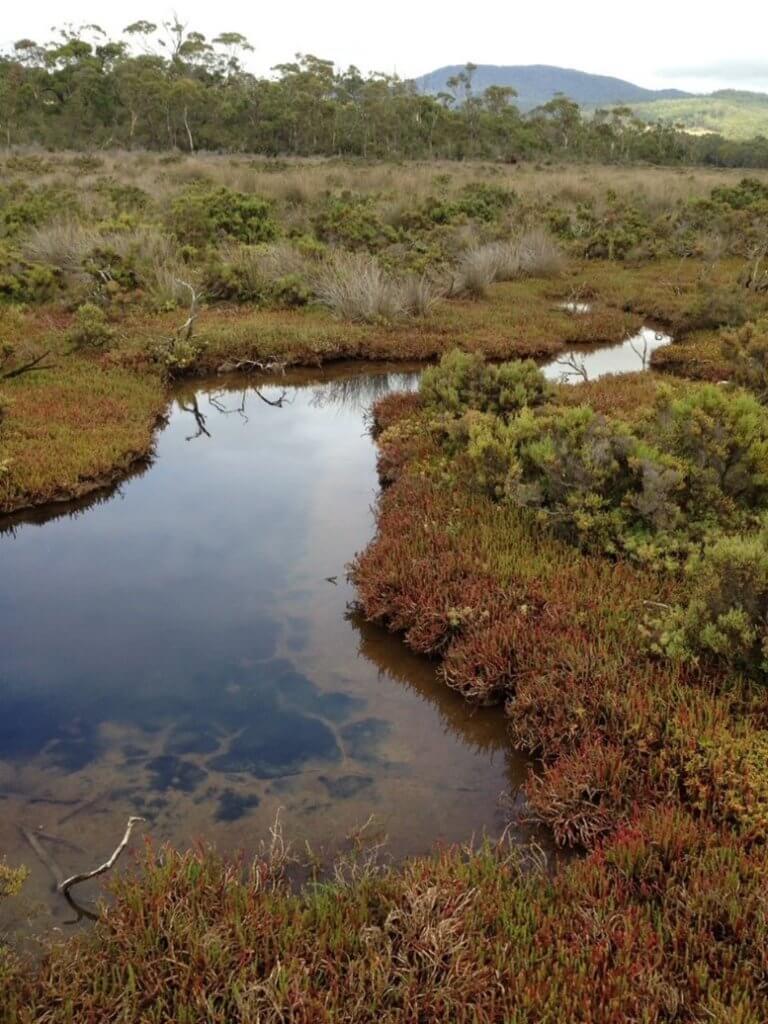
A protected Tasmanian saltmarsh. Source: Australian Mangrove and Saltmarsh Network Conference.
In addition to electing a government that supports climate action, the people of Australia have also been doing lots of things to reduce the amount of carbon that enters the atmosphere and mitigate climate change. Where possible, people are consuming less, recycling more, eating more sustainable meats and more delicious vegetables, sometimes even growing some of their own food, replacing their cars with electric vehicles, driving and flying less, using sustainable transport, not supporting banks that invest in fossil fuel-based industries, supporting renewable energy initiatives and making buildings more energy efficient…overall, Australians are engaging in climate action.
Australians are coming together as a community to demand more ambitious climate action, greater emissions reductions and stronger accountability from our leaders. Many community groups, land managers and land management organisations are working with Traditional Owners and First Nations people to incorporate indigenous knowledge to restore and care for country. Researchers from a diverse range of fields are coming together to share knowledge in how we can more effectively mitigate climate change. Australians are connecting with natural environments and advocating for the protection of places that store carbon, like forests, saltmarshes and oceans. Climate action is gaining momentum!













